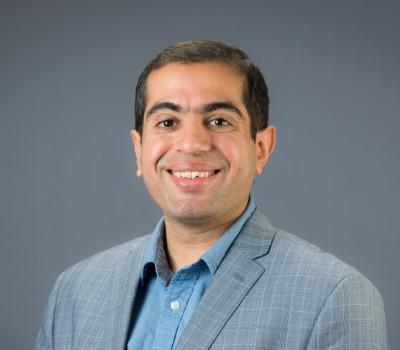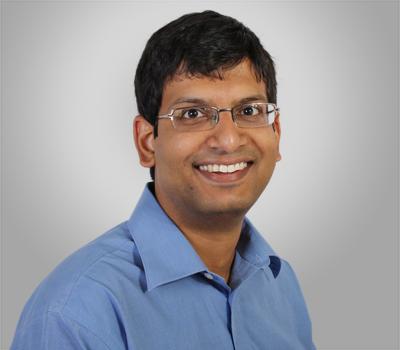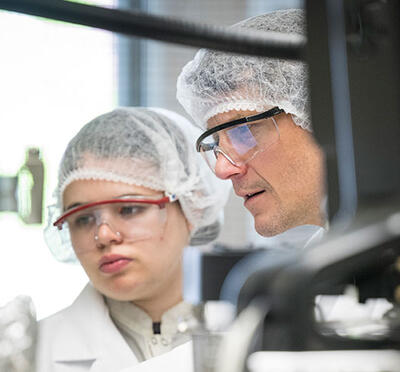Grounded in a long history of excellence in analog integrated circuits, Oregon State University is one of only a handful of universities with several faculty members in integrated electronics. Innovative research led by faculty in the integrated electronics group has thrived with support of leading semiconductor companies.
The Oregon State faculty are integral to a national network that includes several consortiums of industry, academic, and government organizations aiming to revolutionize the semiconductor industry by supporting emerging technologies like AI-assisted design. Oregon State leads the Center for Design of Analog-Digital Integrated Circuits, the FAST Regional Innovation Engine for semiconductors, and the Corvallis Microfluidics Tech Hub. The university is also a partner institution of the Semiconductor Research Corporation and the Northwest AI Hub.
“Because of the critical mass of faculty at Oregon State, we can cover most aspects of the integrated circuits part of the semiconductor world,” said Matt Johnston, associate professor of electrical and computer engineering.
The 11 faculty members and 40-45 graduate students in the integrated electronics group are innovating new solutions in the areas of:
- Analog, digital, and mixed-signal circuit design.
- Circuit and component modeling, simulation, and measurement.
- RF, microwave, and millimeter-wave circuits and systems.
- Components and packaging.
- Wireline circuits and systems.
- Biosensors and bioelectronics.
- Sensor interface circuits.
- Applied electromagnetics.
The group is looking to grow. The School of Electrical Engineering and Computer Science is hiring a new tenure-track faculty member to join the integrated electronics group. Preference will be given to candidates with experience in AI. The position is posted on the university jobs website. Applicants who apply by Dec. 31 will receive full consideration.
A strong base of support
Groundbreaking semiconductor research at Oregon State is supported by decades-long industry partnerships. Companies like Intel and TSMC provide foundry services; Keysight, Tektronix, and Rohde & Schwarz provide testing services and equipment; HP, Texas Instruments, and NVIDIA fund research projects.
The faculty’s research is enabled by state-of-the-art testing equipment in a shared lab space in the Kelley Engineering Center.
“The shared lab gives us the ability to characterize a very broad array of hardware prototypes very effectively,” said Arun Natarajan, professor of electrical and computer engineering.
Starting in 2026, the group will have access to the new Jen-Hsun Huang and Lori Mills Huang Collaborative Innovation Complex, which will include an advanced cleanroom, an electro-mechanical prototyping lab, and one of the nation’s most powerful academic supercomputers.
Solving problems relevant for companies
The integrated electronics group covers circuits end-to-end, from sensing the physical world to sending data out through both wired and wireless data streams. This offers a lot of opportunities for a variety of companies to be involved with research.
“We are always looking for industry collaborators. They help us find problems that are relevant,” Johnston said. “Lower-power and higher-performing devices are always better, but it's quite useful to have more specifically identified challenges to explore. The collaborations also give our students a lot of engagement with companies, which is beneficial for both groups.”
Both the size of the integrated electronics group and the breadth of its research enable collaborative projects that leverage different expertise. Less formal collaborations, like seminars and other group interactions, allow research labs to share general information with each other to foster more effective solutions.
Innovations for sensing the physical world
Improving biological, chemical, and environmental sensors is the focus of the Sensors and Integrated Microelectronics Laboratory, headed by Johnston. In general, the lab works to miniaturize sensors and instruments into handheld or wearable form factors. The research requires a variety of interdisciplinary fields, including CMOS integrated circuits, embedded systems, microfabrication, chemistry, biology, and physical sensing.
Current research includes a project with HP to pioneer a new approach for lab-on-chip technology. The advanced platform for cell counting and biosensing combines integrated circuits with microfluidic devices and sensors. Applications for the technology include rapid and precise medical diagnostics, new methods for drug development, and environmental analysis.
Johnston is also part of a cross-disciplinary research project that uses a sensor system based on microfluidics to detect levels of antiseizure medication in saliva. The team is working to incorporate artificial intelligence to optimize dosing for people with epilepsy. The long-term goal is to develop a new device that could be used at home.
New circuits for efficient wireless systems
The growth of artificial intelligence systems that require wireless sensing and communication, such as autonomous driving, is creating demand for faster and more efficient chips. The High-Speed Integrated Circuits Lab, headed by Natarajan, is focused on finding solutions to this growing need for companies.
“We do our research with an eye toward scalability, because we want to build things that can translate into new technologies,” Natarajan said.
One area the lab is working to improve is visual systems for the autonomous movement of drones, robots, and cars.
“The challenge is that we are trying to receive a very weak reflection while trying to cancel a very strong source that might be right next to us. Think of it like a camera that is being blinded by its own flash,” Natarajan said.
To work around this self-interference, his lab is building circuits for radar systems that include more sensitive cancelers. They are also developing machine learning algorithms that are better at adapting to changing environments.
In another project, Natarajan is addressing a need to reduce energy consumption for high-computation applications like AI by developing a new type of analog signal processing. A collaboration with Washington University in St. Louis has yielded two papers at the leading integrated circuits conference, ISSCC. Their approach has been awarded one patent, with a second in progress.
“One of the challenges of making analog computation low-power is that the tradeoff is flexibility,” Natarajan said. “We have a very flexible way of doing signal processing, so you can change the analog processing that you're doing without paying a power penalty.
Using AI to reduce the energy demand of data centers

Large language models like ChatGPT are driving escalating data rate demands that require increasing bandwidth.
“The problem is that the energy required to transmit a single bit is not reducing at the same rate as the data rate demand is increasing, causing data centers to use huge amounts of power,” said Tejasvi Anand, associate professor of electrical and computer engineering.
Anand’s lab, the Mixed Signal Circuits and Systems Lab, focuses on making wireline communication more efficient, and he has taken a new approach with support from the Semiconductor Research Corporation.
“AI caused the problem in the first place, so let's use it to solve the problem,” Anand said.
Reducing the corruption of data during communication requires signal processing, which consumes energy. And at very high data rates, there is more corruption. Instead of using an equalizer, which is the standard solution, Anand’s team is using AI principles to train a classifier to undo the corruption.
“When we use this approach, it’s easy to get 40-60% improvement over the state-of-the-art technology in terms of energy efficiency,” Anand said.
Test results from the first chip were published in 2019 and nominated for a best paper award at the Custom Integrated Circuits Conference. The results of an improved chip were published in 2021 at the Symposium for VLSI Circuits, one of the top conferences in the area. The lab has recently completed testing of a third chip that has even better results. These are all significant achievements, but Anand says he is prouder of the students.
“The skills that the students are acquiring working on this project is unparalleled,” Anand said. “They are trained on cutting-edge technology, like FinFET technology of Intel 16 nm and transceivers that are more than 40Gb/s. They also know machine learning to train the classifiers. They know the entire wireline communication and the circuit design. Then, they fabricate the chip and measure it. This combined package of skills is with the students. So, I will say, they are very precious.”






